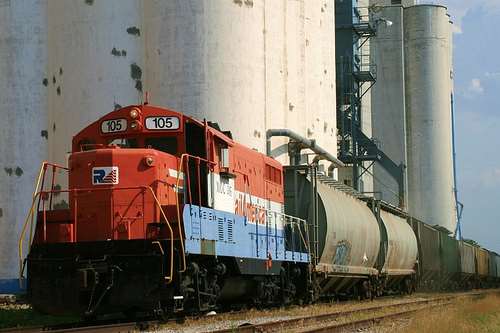
Exceptional harvests have created a storage capacity crunch at U.S. elevators and are contributing to a brighter economic outlook for elevator operators, according to a new research report from CoBank.
Record yields of corn, soybeans and grain sorghum are competing for storage space with the large wheat inventories harvested earlier this season. At the same time, futures markets are also incentivizing farmers to store crops well into next year. As a result, the value of grain storage space is on the rise, and storage shortages have been widely reported across the Western Corn Belt, and Central and Southern Plains regions.
“This year’s crop abundance is a welcome change for grain elevators that suffered depressed profits last year,” says Tanner Ehmke, a senior economist at CoBank and author of the new report. “With demand for storage being the highest in recent years, elevators will benefit from collecting more on storage fees in addition to capturing substantial carry in the futures market and the ability to buy basis at a much cheaper level than last year.”
The report notes that storage tightness could persist through 2017, given that U.S. Department of Agriculture forecasts call for the highest wheat and corn ending stocks total since the 1987-88 marketing year. As result of this year’s crop surpluses, interior basis levels for corn and wheat across the U.S. have reached multiyear lows, offering elevators the opportunity to profit on basis appreciation on company-owned grain.
“Grain companies widely figure there is more upside risk to basis this year than downside risk. The return of export demand for corn and an improved export pace for hard red winter wheat, combined with slow farmer selling, is expected to support basis levels for corn, soybeans and wheat in the weeks and months ahead,” said Ehmke.
Also benefiting elevators is increased shipping capacity in the nation’s rail and barge networks. Initially there was concern that U.S. transportation would not be able to handle this year’s bumper crops. But a decline in coal and crude oil shipments has greatly increased rail and barge capacity, allowing sufficient transportation to move the record harvests. Furthermore, after peaking earlier this year, rail freight rates in the secondary market continue to weaken going into the fall shipping season despite heightened export demand. Lower freight cost helps to bolster grain elevators’ bottom lines.
The confluence of all of these factors means elevator operators are looking at a promising economic environment. “Most grain elevators should anticipate higher returns over last year,” notes Ehmke.
Click here to see more...